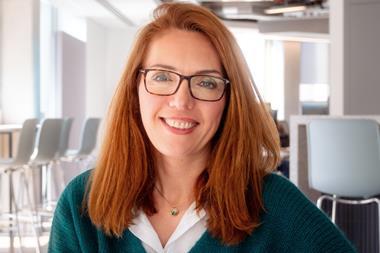In this three page analysis special, Insurance Times writers look behind the headlines to ask what this autumn’s key developments really mean for brokers.
Branching out into broker networks:
Danny Walkinshaw says broker networks are growing, but do brokers need to join?
When a broker network is compared to a Gucci handbag or an iPhone, it raises the question, just how big can networks grow?
John Kitson, intermediary business director at Norwich Union, made the comparison when he said that networks are the “new must-have fashion accessory”.
His comments related to the attraction of networks for consolidators, but it appears it is not just that the current networks will get bigger – but, as rumour has it, more networks will join the fray.
This autumn, the Purple Partnership was born. It will be managed by former Westinsure network managing director Bob Parkins in collaboration with Jelf.
Jelf Group chief executive Alex Alway will chair the new venture that will see a consolidator looking to tackle the network market from within.
So why has a consolidator decided to start up its own network? One answer is, why spend millions buying a network, when you can start one yourself? A broker which has access to markets and can offer IT and compliance is well placed to create a network.
Jelf has all these attributes and has chosen an experienced network professional in Bob Parkins to steer it in the right direction.
A consolidator might also see creating a network as a more viable option than acquiring a broker to distribute its schemes. The alternative is to have a number of hungry independent brokers to distribute the products, without owning them.
Last week also saw Layton Blackham Business Solutions (LBBS), the broker network owned by AXA, unveil ambitious plans to become the leading network within three years. LBBS has 50 members, and is looking to take on the likes of Broker Network to grow to 200 members.
The market is split on the sustainability of networks. Grant Ellis, the chief executive of the Broker Network, which is in the process of being taken over by Towergate, said that there will be room for only two or three in the future.
But Steve Burrows, chief executive of Cobra Network, is adamant that they are key to the future and welcomes the arrival of new start-up networks.
He said recently: “It is good to have healthy competition between networks. It brings more into the market and it is inevitable that we would get more networks. You have to start a network that is good, because there is no point in starting a ‘talking house’ as anybody can start an alliance, that is easy.
“A network has to produce value and you have to have lots of network so they can compete with each other.”
Ellis, like Burrows, has criticised alliances in the past, claiming that they are of no benefit to brokers.
He said: “There is no sustainable value added for insurers, so there is little point in joining. The only reason alliances exist is to drive up commissions. Unless they come up with a concerted approach to bring pressure on insurers, they will fade.”
It is quite the opposite for networks, which claim to be the survival option for brokers. But what is stopping the many brokers out there who have yet to join?
It is feared that brokers will lose their independence and, as long as they are performing well on their own, they are happy. But network bosses are warning small brokers to look to the future.
Burrows thinks they have nothing to lose by joining early and stabilising their future.
He said: “I can’t understand why, if a small broker sees a network, it doesn’t join.
“To remain independent and to have reducing commissions and insurers dealing with it by phone, seems to me a more difficult way of running a business than it could have if it joined a network. It loses nothing, because it can only gain, it amazes me really. It is about spreading the word.”
That word is spreading, and the Purple Partnership is out to prove that there is a place for more networks. Watch this space.
The final warning
TCF could help businesses prosper, finds Ellen Bennett
Sarah Wilson, the FSA’s director of Treating Customers Fairly (TCF), was as clear as a regulator can be. “There is a real risk that many firms will miss the final deadline in December 2008 [for implementing TCF],” she told a packed hall of delegates at a conference on the initiative.
With this conference, and the publication of a report on the progress the financial services industry has made on the six TCF objectives, the FSA has laid its cards on the table. Companies have a little over a year to get up to scratch or face a tougher regulatory regime.
Wilson stated that, if the deadline were missed, it would be a “huge missed opportunity for the industry”, with “significant regulatory consequences”.
These would include “increasingly requiring the use of skilled persons; imposing demanding risk mitigation plans with challenging deadlines and remediation work”.
This is the stick the FSA is using to drive the industry, but there is a carrot too, as other speakers at the FSA-organised conference were keen to point out.
Treating customers fairly means keeping customers, and selling more products to them, which in turn means higher profits.
This reward is all-too-often ignored, both in the FSA’s statements and the industry’s internal discussions about TCF.
But if those businesses that implement the changes by the deadline are rewarded with lighter touch regulation as well as happier customers, then in the long term at least, everyone wins.
Distribution is king
Michael Faulkner examines Groupama’s moves
Groupama is not shy about its reasons for buying brokers
Groupama chief Francois-Xavier Boisseau is remarkably candid about why the company is buying commercial brokers.
The simple fact of the matter is that the company is struggling to grow its commercial business in the soft market.
In the face of tough competition from SME heavyweights such as AXA and Norwich Union, Groupama is not getting a look in.
As a result, its commercial book will not grow this year – the first time this has happened.
Groupama now aims to massively increase its share of the business placed by its acquired brokers Lark and Bollington. Boisseau says that 20% would be a reasonable amount.
But he stresses that this will be done without subverting the independent broker model. Lark and Bollington will not be tied agents.
There is commercial sense in what Groupama is doing. First, if successful, it will help to expand its distribution and market share and give the company opportunities to widen its underwriting footprint.
It has already made a move into motor trade, utilising Bollington’s expertise in the sector.
Second, its investment in broking will diversify its income and provide a return that is one step removed from the under-writing cycle.
Groupama’s broker investment strategy now appears to be fundamentally different to that of its French rival, AXA.
AXA has always maintained that its broker acquisition strategy has nothing to do with buying distribution in the same way as Groupama. AXA claims its purchases are solely about diversifying its revenue stream.
Nonetheless, there remains a degree of scepticism about AXA’s long-term motives, despite no evidence to suggest that its ownership of brokers is a play to build business volume.
But Boisseau’s candour about Groupama’s motives will no doubt be seized on by those who fear AXA is following a similar path.
Overall it’s business at any rate
The signs of the market hardening are growing – but the outcome is far from certain, says Tom Flack
Talk is cheap – especially when it comes to rates.
Last week Royal & Sun Alliance (R&SA) chief, Bridget McIntyre, lambasted the market for its lack of action on pursuing rate increases, despite there being no shortage of pledges from senior industry figures.
Fortis Insurance chief executive Barry Smith said that insurers hell bent on pursuing volume could hinder the recovery of commercial rates.
Evidently, there being few signs that the practice of grabbing market share is on the wane, it could be concluded that rates will just have to wait.
Though rates in some lines of business (commercial property and solicitors’ PI to name but two) continue to verge on the suicidal, the commercial considerations of individual insurers, somewhat unsurprisingly, tend to trump concerns over the long-term profitability of the market.
Whatever the case may be, rates, like all numerical data, can be easily used and abused.
There are a number of important considerations that need to be made before it can be said with any degree of certainty either that sustained rate increases are being effected or that their hallowed cousin, the hard market, is on the way.
First, and as any broker will say, what insurers say and what they do are entirely different things. A chief executive’s proclamation does not easily translate to the coalface, where underwriters are faced with stern targets – and dwindling comissions.
McIntyre’s swipe at the competition may have credence – R&SA is clearly out on its own when it comes to implementing sustained rate increases this year – but it should be said that its competitors, most significantly AXA and Norwich Union, have implemented rate increases of up to 10% across a variety of commercial lines books last month.
Norwich Union has pledged that further increases in property, fleet and liability of up to 7% will follow in 2008, while Zurich and Allianz, among others, have suggested they will be looking to make similar moves.
Second is the fact that different lines of business behave in very different ways. Even R&SA has not yet dared increase its commercial property rates this year. Instead, merely holding steady has cost it precious volume.
On the other hand, there are few insurers which have not increased their private motor rates by at least 5% this year – some of the bigger players in fact – have moved by over 15%.
Yet the size of the number does not denote the significance of the move. A 5% increase for a book of business that is already undercutting the competition by 25% in effect means little.
A third consideration is the fact that rates alone do not tell the whole story. Across a book of business, rates will continue to vary considerably depending on a variety of factors, including the size of the insured party, while deals and discounts for business both old and new means that customers can still find a deal where the price ultimately does not reflect the risk.
Until the market takes the drastic step of phasing out – or at the very least drastically reducing – such practices, rating increases may prove to be little more than a smokescreen deployed in the name of underwriting discipline.
Indeed, with so much volume at stake – and so many players actively attacking each other – it can be argued that, for now at least, rate increases are as much wishful thinking as good business practice.
As a result, it would not be surprising to see substantial hikes by some insurers of 15%–20% as we have seen in the past, as opposed to the more measured 3%–4% per quarter.
At any rate, as recent figures show, those insurers that are prepared to take the plunge have been burned.
“Royal and Sun was massacred on volume in the first six months of this year,” a senior industry figure says, referring to its commercial property and fleet books – the latter of which has shrunk by a fifth year on year.
“We’ve seen insurers withdrawing capacity in order to honour their pledge to underwriting discipline many times before,” adds another.
“What’s interesting is how some of them switch between roles – in some cases, regardless of the market cycle, but based instead on what their competitors are doing.”
Ultimately, few are prepared to dispute that rating increases are coming. Whether it will be a market-wide phenomena is highly unlikely, but it seems as though a critical mass, driven by claims inflation, could be approached sometime next year.
But for now, it remains a guessing game.
“Rate increases will come,” McIntyre concludes.”





































